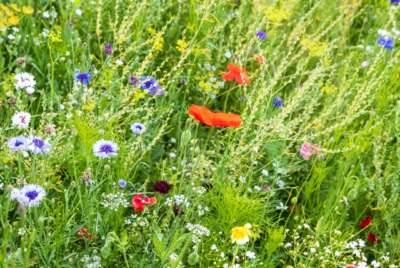RESEARCH
Effects of forest bathing (shinrin-yoku) on levels of cortisol as a stress biomarker: a systematic review and meta-analysis
Summary
This meta-analysis examined the effects of forest bathing (Shinrin-yoku), a practice of spending time in forests, on stress levels by measuring cortisol, a stress hormone, in saliva or blood. Researchers analyzed data from 22 studies and included 8 in the meta-analysis, comparing cortisol levels in people who spent time in forests with those in urban settings. Most studies showed that cortisol levels dropped significantly after forest exposure, suggesting a stress-reducing effect. However, some studies noted that the expectation of benefits (placebo effect) could also contribute to the results.
The findings indicate that forest bathing can lower cortisol levels in the short term, which may help reduce stress. The paper found that people who spent time in forests had lower cortisol levels before and after their visits compared to those in urban areas. However, due to limited data and differences in study designs, more research is needed to confirm these results and understand the long-term effects of forest bathing on stress and health.
Link
Antonelli, M., Barbieri, G., & Donelli, D. (2019). Effects of forest bathing (shinrin-yoku) on levels of cortisol as a stress biomarker: a systematic review and meta-analysis. International Journal of Biometeorology, 63(8), 1117–1134
https://link.springer.com/article/10.1007/s00484-019-01717-x
Notes/Suggestions
1. Kobayashi H, Song C, Ikei H, Park BJ, Lee J, Kagawa T, Miyazaki Y (2017) Population-based study on the effect of a forest environment on salivary cortisol concentration. Int J Environ Res Public Health 14(8):931. https://doi.org/10.3390/ijerph14080931
2. Komori T, Mitsui M, Togashi K, Matsui J, Kato T, Uei D, Shibayama A, Yamato K, Okumura H, Kinoshita F (2017) Relaxation effect of a 2-hour walk in Kumano-Kodo Forest. J Neurol Neurosci 8(1). https://doi.org/10.21767/2171-6625.1000174
3.Lee J, Park BJ, Tsunetsugu Y, Kagawa T, Miyazaki Y (2009) Restorative effects of viewing real forest landscapes, based on a comparison with urban landscapes. Scand J For Res 24(3):227–234. https://doi.org/10.1080/02827580902903341
4. Lee J, Park BJ, Tsunetsugu Y, Ohira T, Kagawa T, Miyazaki Y (2011) Effect of forest bathing on physiological and psychological responses in young Japanese male subjects. Public Health 125(2):93–100. https://doi.org/10.1016/j.puhe.2010.09.005
5. Park BJ, Tsunetsugu Y, Kasetani T, Hirano H, Kagawa T, Sato M, Miyazaki Y (2007) Physiological effects of shinrin-yoku (taking in the atmosphere of the forest)—using salivary cortisol and cerebral activity as indicators—. J Physiol Anthropol 26(2):123–128. https://doi.org/10.2114/jpa2.26.123
6.Park BJ, Tsunetsugu Y, Ishii H, Furuhashi S, Hirano H, Kagawa T, Miyazaki Y (2008) Physiological effects of Shinrin-yoku (taking in the atmosphere of the forest) in a mixed forest in Shinano Town, Japan. Scand J For Res 23(3):278–283. https://doi.org/10.1080/02827580802055978
7. Park BJ, Tsunetsugu Y, Kasetani T, Kagawa T, Miyazaki Y (2010) The physiological effects of Shinrin-yoku (taking in the forest atmosphere or forest bathing): evidence from field experiments in 24 forests across Japan. Environ Health Prev Med 15(1):18–26. https://doi.org/10.1007/s12199-009-0086-9
8.Tsunetsugu Y, Park BJ, Ishii H, Hirano H, Kagawa T, Miyazaki Y (2007) Physiological effects of Shinrin-yoku (taking in the atmosphere of the forest) in an old-growth broadleaf forest in Yamagata Prefecture, Japan. J Physiol Anthropol 26(2):135–142. https://doi.org/10.2114/jpa2.26.135







